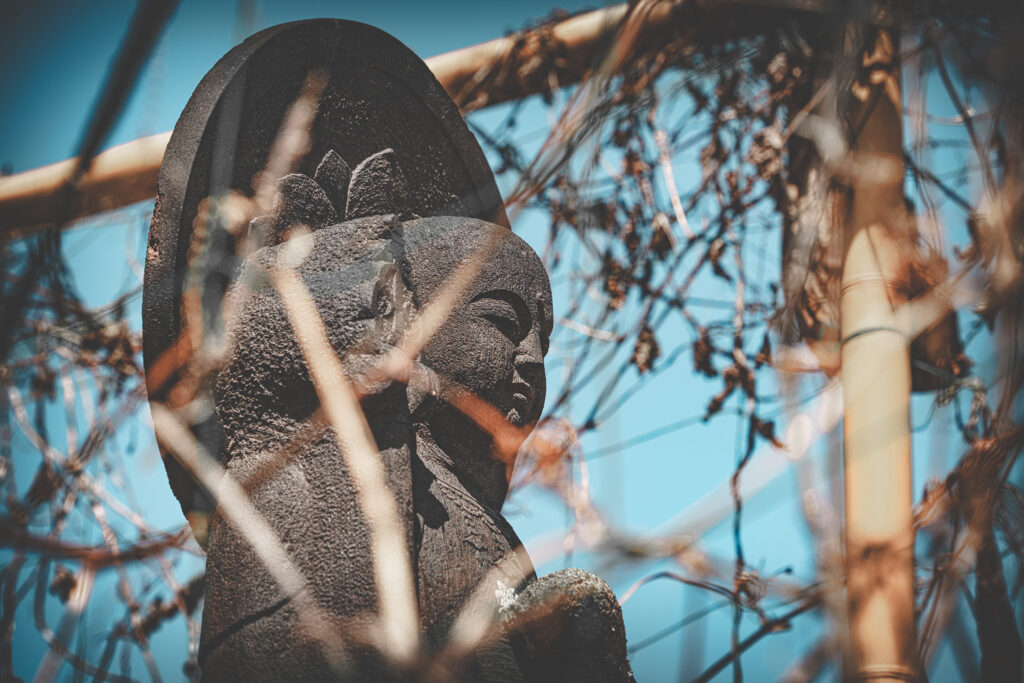
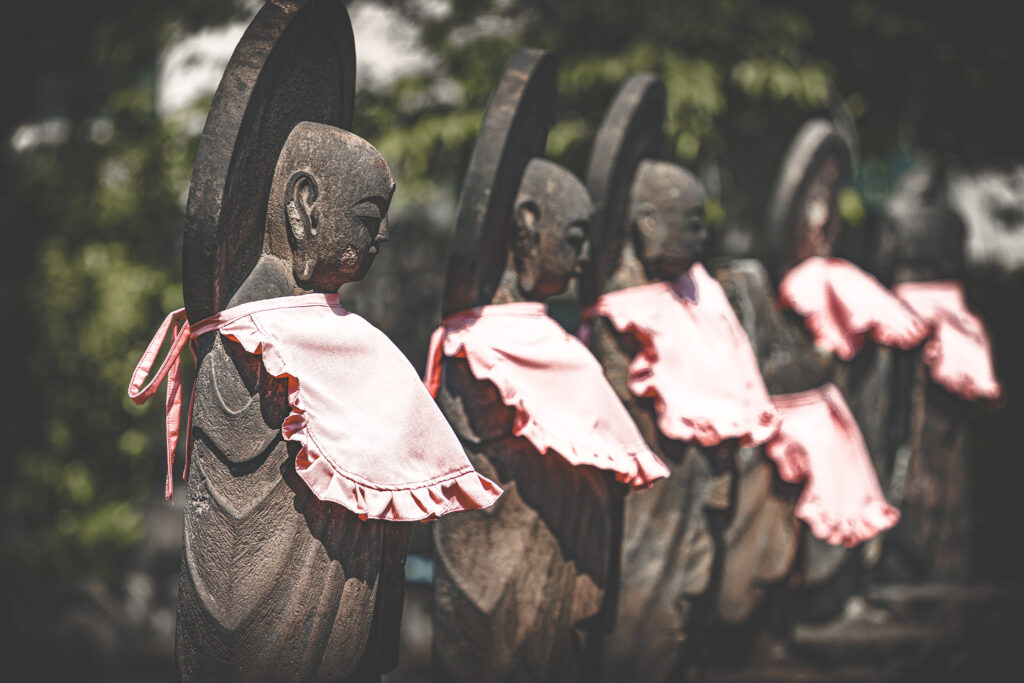
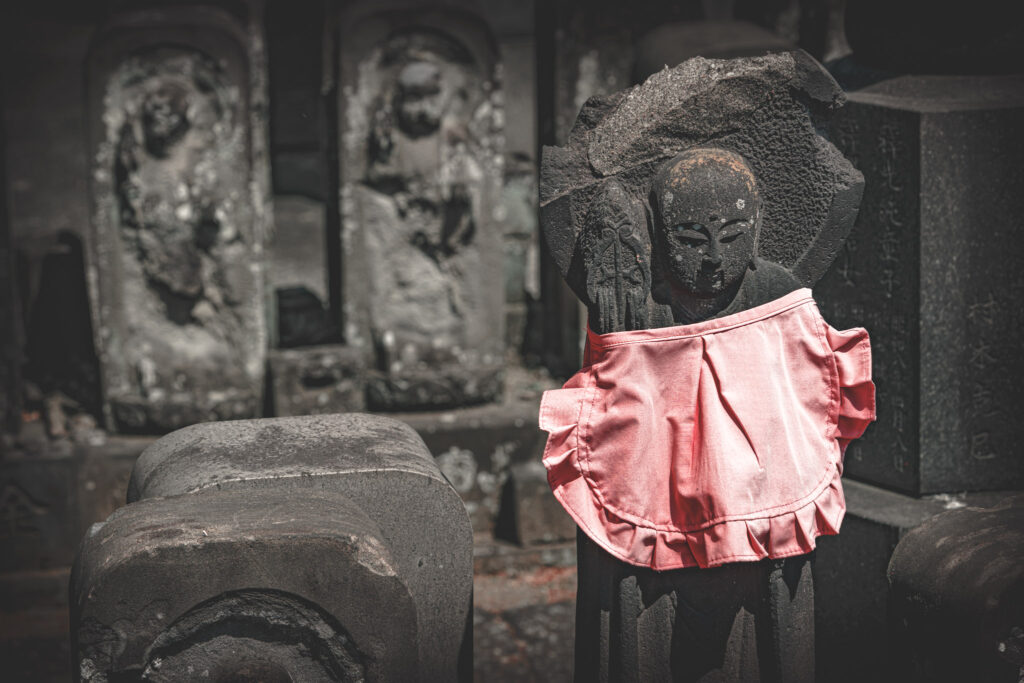
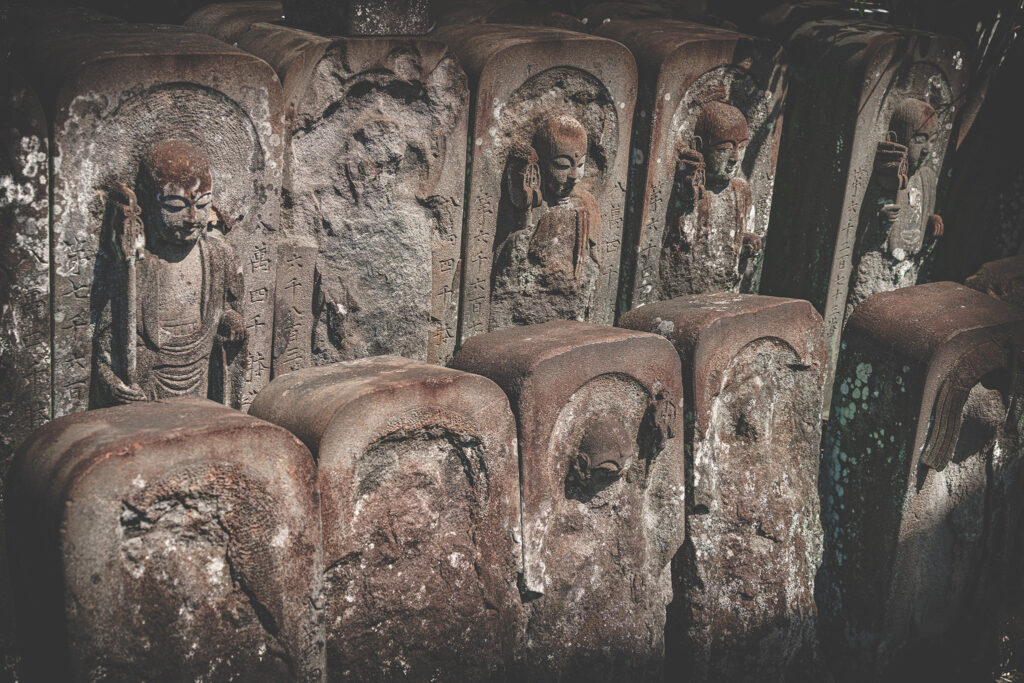
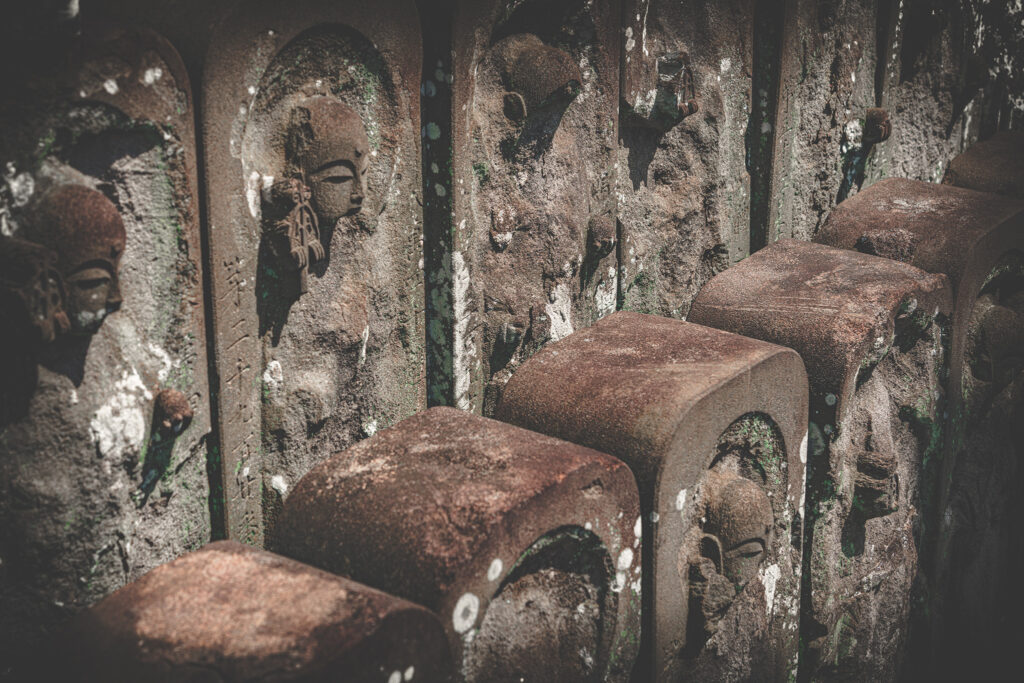
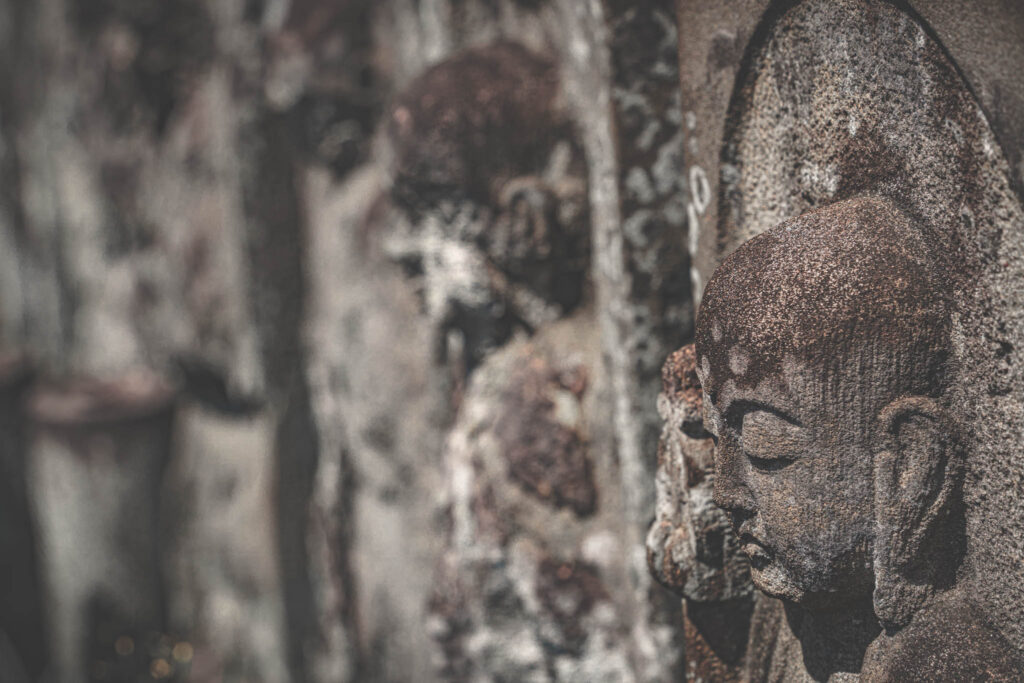
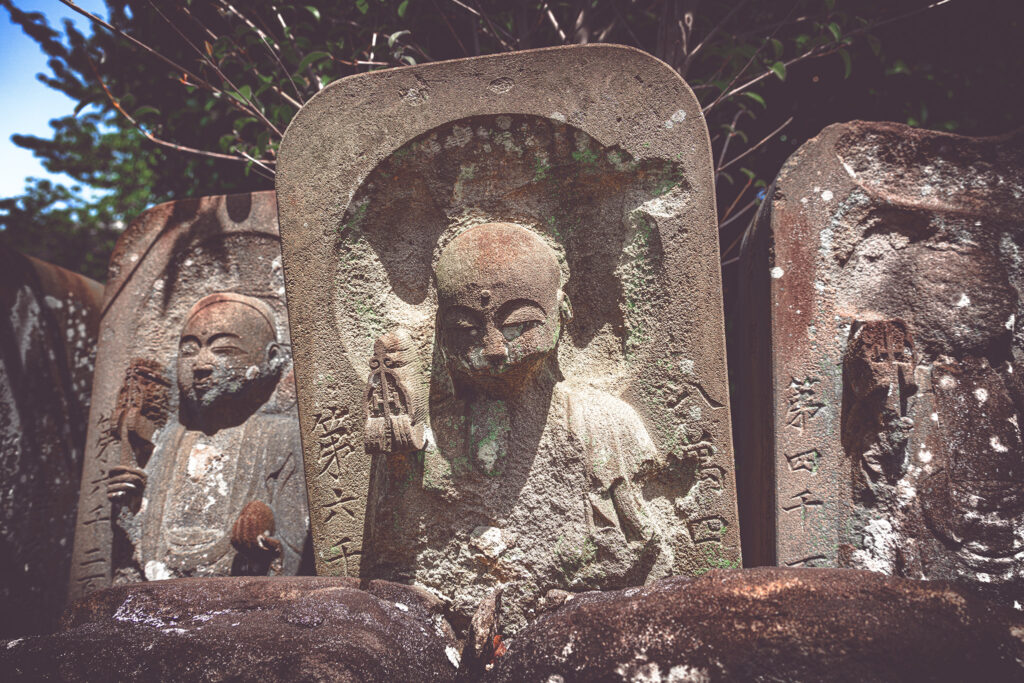
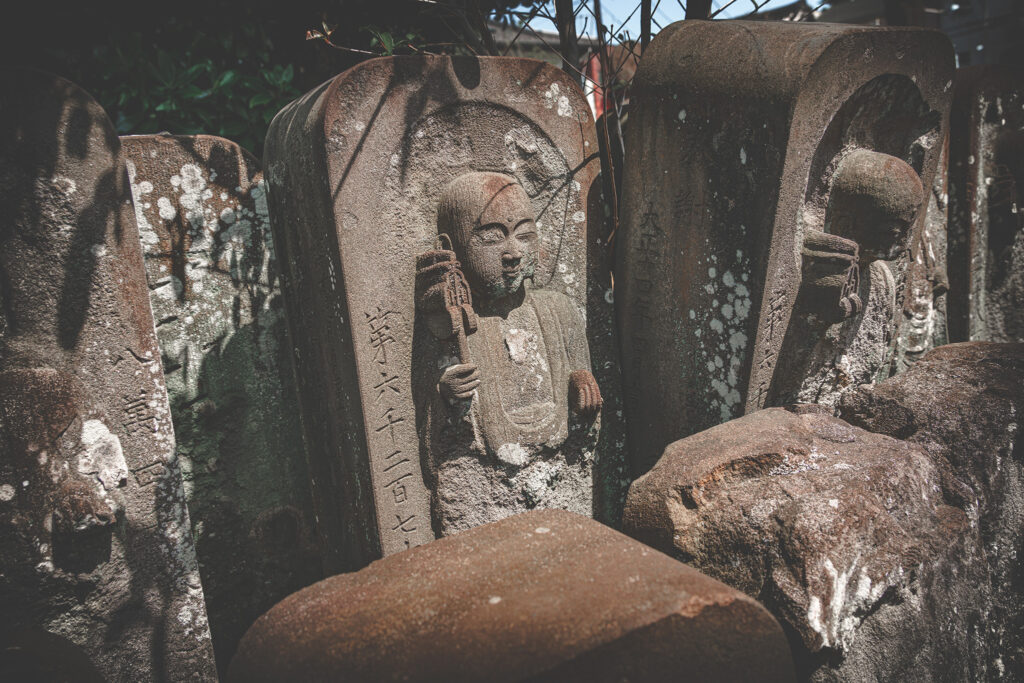
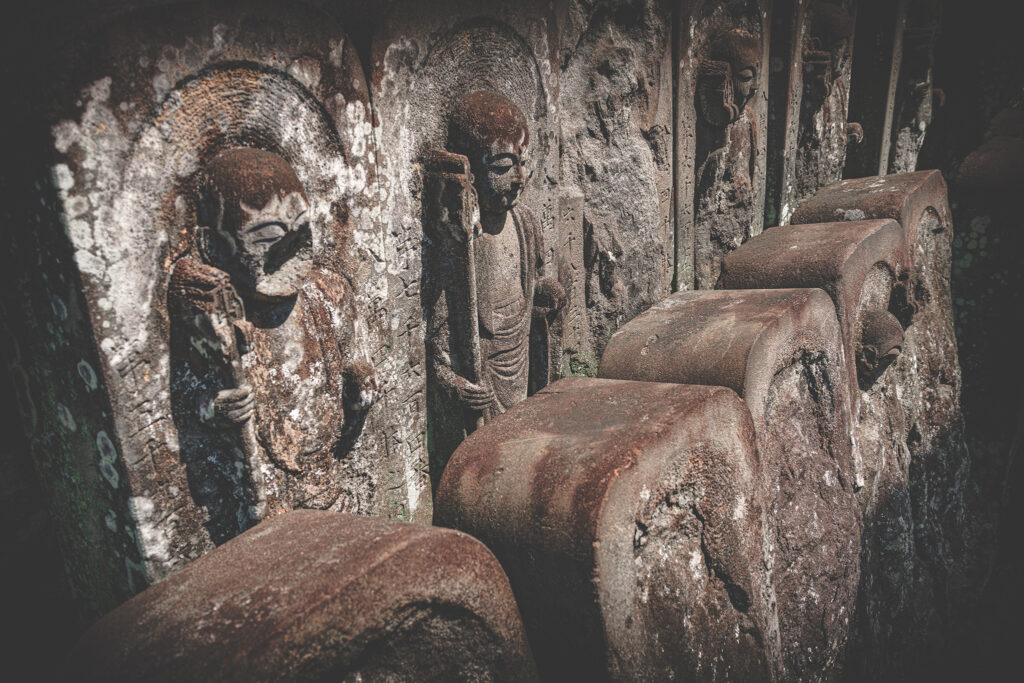
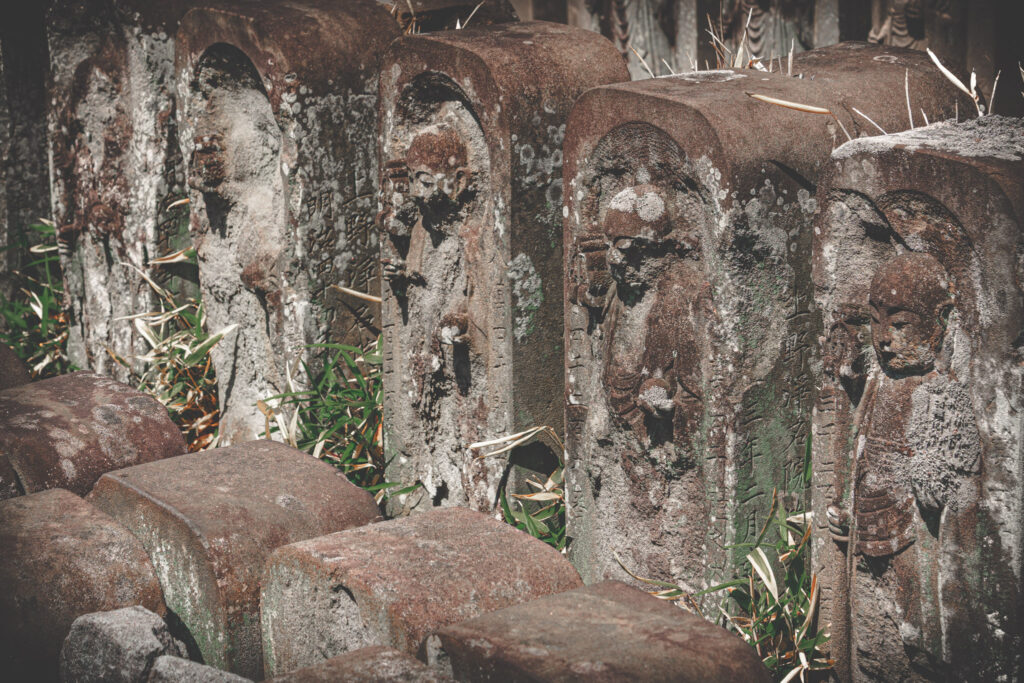
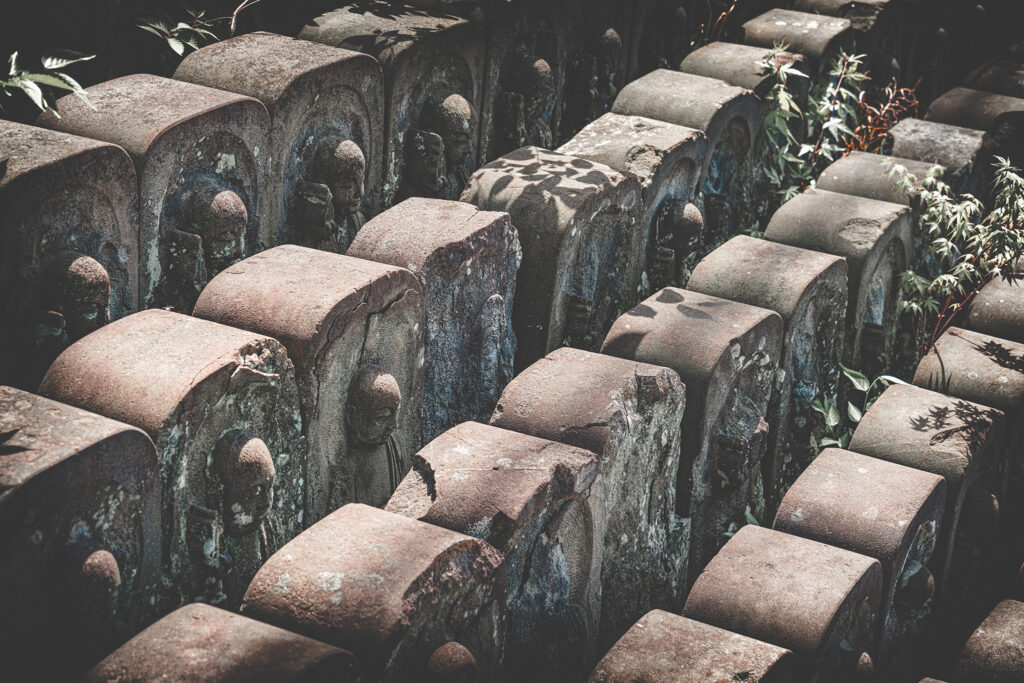
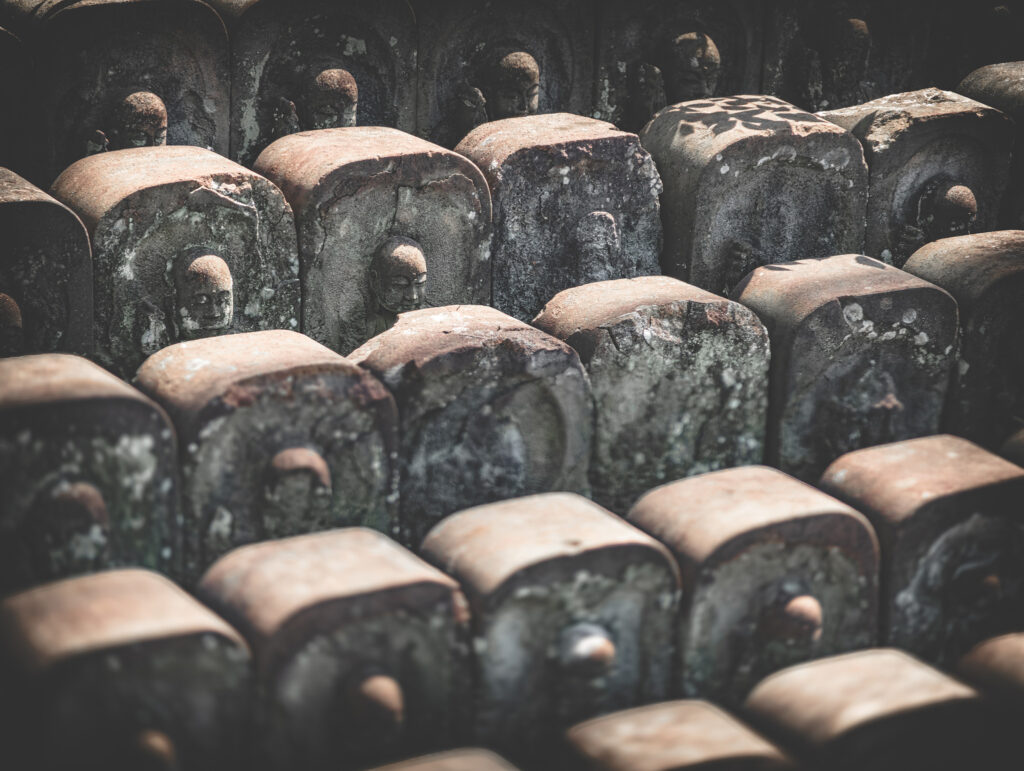
The vast majority of the 25,000 (not 82,000) Jizo statues here, in their unsteady serried ranks, take the form of rectangular slabs of reddish-gray sandstone with rounded top edges, something like short but very thick Western tombstones. The bodhisattva as a childlike monk — serene face, inward gaze, tonsured with robe and the famous staff to pry open the gates of the underworld — is always carved in half-relief so that he partially projects from the stony matrix. His characteristic halo is shallowly carved back into the block around him.
These aren’t tombstones, as I noted, but votive offerings that began in 1876 with the priest Myoun. However, weathering of the projecting parts of the effigies — selectively erasing robes, hands, staves, often whole sections of saintly visage — has left many of them with a macabre aspect, reshaping them into startling cadaverous revenants or even ghosts, fragments of serene form floating in otherwise empty halos.
There’s some disconcerting symbology in that, a disturbing lesson: Jizo (otherwise known as Kṣitigarbha) foreswore Nirvana — the great annulment of the suffering self — for the sake of all other sentient beings, refusing to escape the birth-death-rebirth cycle of Saṃsāra until he could bring everyone beyond the soteriological event horizon of enlightenment with him.
And yet less than two centuries of inclement Tokyo weather have marched his sandstone effigies well along the route towards complete dissolution, bodhisattva’s vow or not; righteous action, Eightfold Path, doctrine and effort — or not.
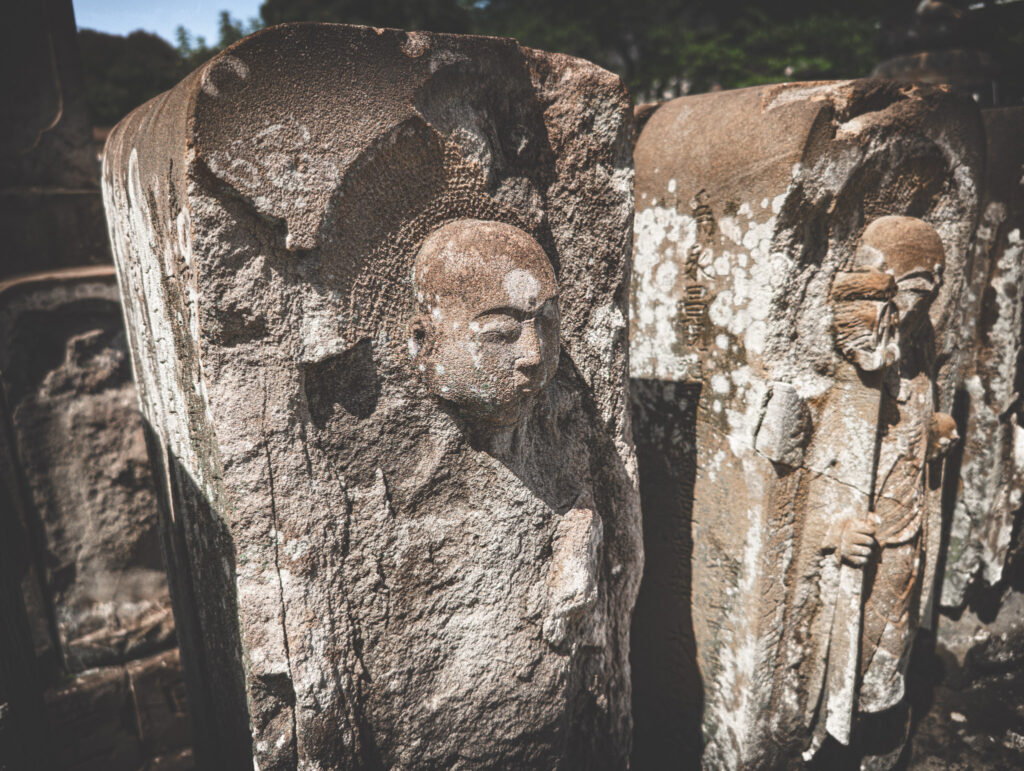

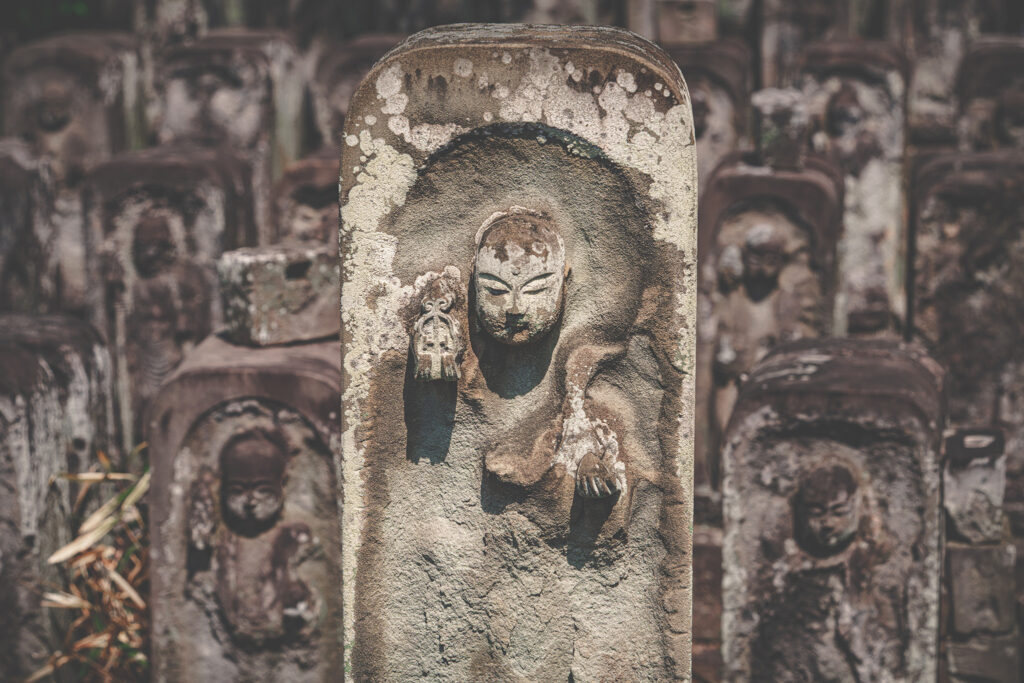
Leave a Reply